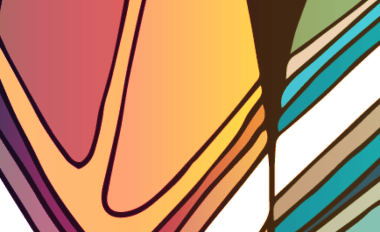| 1788 |
The First fleet arrived at Botany Bay on the 24 of January 1788. 2 days later, British Australia was established in a simple ceremony at Sydney Cove. |
| 1835 | On 6 June 1835, as part of a Tasmanian business syndicate known as the Port Phillip Association, Batman signed a treaty with Woi Wurrung Elders. Batman claimed that through this treaty he purchased 600,000 acres (2,400 km²) of land around Melbourne. This event eventually led to the establishment of the colony of Victoria. |
| 1835-1959 | Ancestral Remains were taken by grave robbers to serve as curios and specimens to study by private individuals and institutions like the University of Melbourne, the National Museum of Victoria and the Institute of Anatomy in Canberra. The Murray Black and Berry collections at the University of Melbourne comprised in excess of 1,600 Ancestral Remains and were just two of the many collections in Victoria. |
| 1960s-1980s | Archaeologists excavated traditional Aboriginal burial grounds such as Kow/Ghow Swamp and Captain Stevenson’s Point. This was considered normal practice at the time by scientific and archaeological realms. The multi-disciplinary work continued for years, despite pleas from some Traditional Owners against it and campaigning in the 1980s for the return of their Ancestors. As a result, Ancestral Remains and associated cultural materials were taken off Country and placed in the custody of government agencies. |
| 1972 | Museums Victoria have removed all Aboriginal Skeletal Remains from public display. |
| 1972 onwards |
In 1972, the Relics Act was established to protect Aboriginal ‘relics’ in Victoria. The Relics Act allowed appointed inspectors to take action to stop those who were doing harm to Aboriginal ‘relics’, which included Ancestral Remains. An advisory group called the Aboriginal Skeletal Remains and Loans Committee was created in 1984. The Victorian Archaeological Survey, established in 1973, soon after arranged for a recall of all Ancestral Remains on loan for study at La Trobe University, and for the transfer of these Ancestral Remains (88 registrations) to the museum. |
| 1984 |
The Victorian Government amended the Relics Act to make it an offence to be in control of or display Ancestral Remains. This was the foundation for Aboriginal communities being able to rebury their Ancestors. An injunction was served on the Board of Museums Victoria to stop Ancestral Remains from Kow/ Ghow Swamp and Keilor from being included in a New York exhibition. The University of Melbourne was served an injunction requiring them to return the Murray Black collection to Museums Victoria. |
| 1985 |
On 22 November 1985, 38 Ancestors were reburied in Kings Domain as it was impossible at the time to identify their origins. Faulkhead and Berg write in Power and the Passion – Our Ancestors Return Home:
|
| 2002 |
The University of Melbourne Berry Collection, identified in 1985 as containing Aboriginal Ancestral Remains, was transferred to Museums Victoria. Altogether the Berry Collection has added more than 800 newly registered remains to the museum’s collections since 2002. Freemasons Victoria transferred a significant number of Ancestral Remains, following an amnesty granted to Masonic Lodges, to Museums Victoria |
| 2006 | The Aboriginal Heritage Act 2006 (Act), No. 16/2006 was assented to on 9 May 2006 . The long title for the Bill for this Act was "to provide for the protection of Aboriginal cultural heritage in Victoria, to repeal the Archaeological and Aboriginal Relics Preservation Act 1972 and for other purposes." |
| 2007 | The Aboriginal Heritage Act 2006 came into effect on 28 May 2007, providing new responsibilities for the protection and return of Ancestral Remains. |
| 2007-2008 | Aboriginal Affairs Victoria transferred provenanced remains under its custodianship to Museums Victoria. In addition, skeletal remains examined by the State Coroners Office, if identified as Australian Indigenous, were released to Aboriginal Affairs Victoria who in turn transferred the remains to the museum. |
| 2011 | The Council decided to undertake research on the management and return of Ancestral Remains. The objective of the research was to clarify how Ancestral Remains were managed from the moment they were disturbed to their return to Traditional Owners. The research was later limited to reports of Ancestral Remains in Victoria that had been dealt with since the introduction of the Act. |
| 2012 | The Ancestral Remains of 132 unprovenanced men, women and children were reburied at Weeroona Aboriginal Cemetery in March 2012. The Cemetery itself was the result of years of advocacy by Traditional Owners for an Aboriginal resting place. |
| 2013-2014 |
The Council published three papers on the topic of Ancestral Remains for the purpose of raising public awareness on the subject and to seek comments on its proposed improvements in these key areas.
The Council’s research found improvements were needed in three key areas:
|
| 2016 | Amendments to the Act made the Council the central coordinating body responsible for overseeing and monitoring the system of reporting and returning Ancestral Remains from 1 August 2016. |
| 1984-2017 |
As of August 2017, the remains of more than 2,500 individuals have been returned by Museums Victoria to communities in all states of Australia and to New Zealand. In observance of the changed responsibilities for Ancestral Remains under the Act (amended in 2016), the Museum transferred custodianship of 260 sets of Victorian Ancestral Remains to the Council. Of these, 49 came from the Museum’s collection, and the remainder had been transferred to the Museum from other institutions. |
Updated

